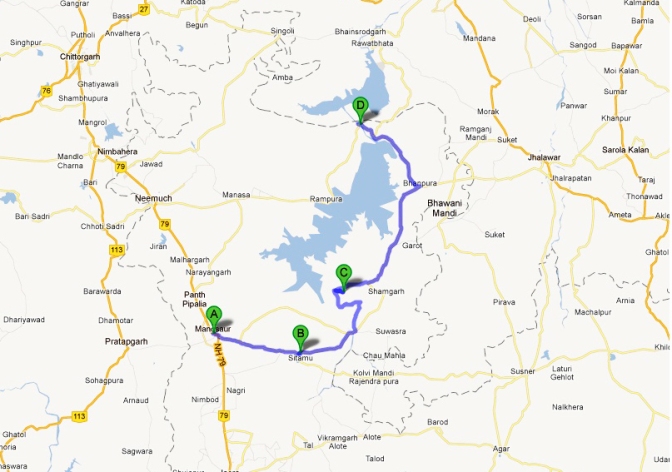People who follow this blog will know of my love affair with Madhya Pradesh. I have been to the state a countless number of time and each trip has been a revelation. Its been exactly a year that i came back from this trip, which, incidentally happened to be my last venture into this magical state. So needless to say, this post has been a long time coming.
In late 2010, we were commissioned by Madhya Pradesh government to publish a travel guide on three of the least known districts of the state – Neemuch, Ratlam and Mandsaur. These three districts, located on the westernmost edge of the Malwa Plateau are surrounded by Rajasthan on three sides. So little is known about the region, past its main cities, that we often went along without any preliminary research, stumbling upon unknown places and palaces one after the other.
I was accompanied on this trip by colleague and friend Parvati Sharma (now a published author who had previously accompanied me to other equally exciting destinations in MP like Burhanpur and Asirgarh), who basically did most of the research and writing while I hung around, clicked a photograph or two, supplied the evening whiskeys and ran into hyenas (oh yes, but more on that later).
We took a train from Delhi and on a slightly nippy February morning, reached the small big town of Ratlam. Its claim to fame is the fact that it is a major railway junction and that a small village in the Western Ghats was passed off as this dusty town in the hit film Jab we Met. We shall deal with crowded Ratlam and its charming surroundings at a later blog post. For now we skip over to our next destination, Mandsaur. One look at the map will tell you that the three towns of Ratlam, Mandsaur and Neemuch are linked together by the spanking new, four-laned State Highway 31. We however were barely on it. From Mandsaur we embarked on a circuitous journey through the badlands of Madhya Pradesh to Neemuch. This post deals with the first leg of the journey from Mandsaur to Darmarajeshwar via Sitamau.

Mandsaur, the smallest of the three towns is also the oldest. According to some sources, the great Sanskrit poet Kalidasa was born here, and Mandsaur – or Dashapura as it was known for much of its history – is mentioned in his best-known work, Meghdoot.
Most of the town is still packed inside the medieval city walls and as a result, it is quite a job to manoeuvre even a small vehicle in its many crowded lanes. Just outside the city walls, and on the banks of the tired looking river is the Pashupatinath Temple, the biggest attraction of Mandsaur. The temple complex, which is rather modern has been built around a unique shivalinga which has four faces carved on the four cardinal directions.
